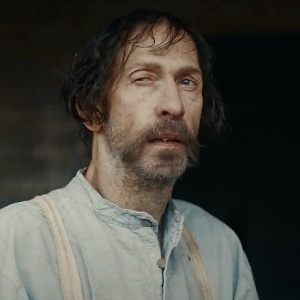Movie Reviews
Review: Poor Things star’s unconventional path to enlightenment
/cloudfront-ap-southeast-2.images.arcpublishing.com/nzme/FK4EY5GBJJAC5NV4UKS4O5MANY.jpg)
Emma Stone in a scene from Poor Things. Photo / AP
It is sickly hilarious to make a movie in which so much consensual sex is had, often so gleefully, that is not the least bit sexy. Though Bella Baxter’s insatiable libido might be her guiding light at first in Poor Things, sexual liberation (or “furious jumping,” as she calls it) is only part of this fantastical, anarchic journey to consciousness.
Filmmaker Yorgos Lanthimos and his star, Emma Stone, have a good and strange thing going whether she’s playing a striving scullery maid who works her way into the favour of Queen Anne, or a reanimated Victorian woman finding independence. Stone helps make his black humour more accessible, and he creates unorthodox opportunities for her to play and stretch. We, the audience, are the benefactors.
Poor Things was not a whole-cloth invention. It is an adaptation of Alasdair Gray’s 1992 novel, done by The Favourite screenwriter Tony McNamara whose edges and wit haven’t dulled and in fact flourishes outside the cruelty of the previous film. Don’t worry, the humour is plenty dark here, but self-actualisation looks good on them.
In this depraved and not-so-subtle fairytale, men see Bella as a thing to possess and control. Her creator, Dr Godwin Baxter (Willem Dafoe), a mad scientist with violent scars all over his face from a childhood as test subject for his own father, wants to hide her away from the corrupting influences of the world. His horrified student Max McCandles (Ramy Youssef), enlisted to study Bella, wants her to be his wife. And the dandy attorney Duncan Wedderburn (Mark Ruffalo) sees a sex doll, someone with the potential to be as wild and adventuresome as him and eschew the conventional stuffiness of their time. Everyone assumes Bella will not be too much of a problem. And everyone is wrong.
It wouldn’t be a Lanthimos movie without some immense, irreconcilable discomfort, like using a highly sexualised woman with the mind of a toddler for comedic purposes. But this is hardly the first fairytale to exploit its heroine for her innocence or naivete. Does it make it better if that’s the point? Is it making light of second-degree rape? Is it the film’s responsibility to answer to? Or is this the prickly post-film debate that everyone is supposed to be having? That is something only the individual can answer.
Stone moves like a doll who hasn’t quite figured out she has joints yet and talks in incomplete, childish sentences. She is not actually mimicking a toddler, it’s something weirder and more fantastical than that. In La La Land she moved as though walking on air. In Poor Things, there is a marionette quality.
And Bella evolves quickly. She learns to walk and speak and think and masturbate and dance and read and philosophise about inequalities. It never occurs to her to not do, or say, exactly what she pleases in this opera of appetites. And her evolution is appropriately messy, taking her to Portugal, Alexandria and Paris, as she figures out her likes and dislikes. You almost want to see her go up against the mean teens in Barbie. Social mores really are the dullest things.
This story exists in a Victorian dream/nightmare, a vision so stuffed with fantasy it reminded me of The Adventures of Baron Munchausen. But it is undoubtedly among the year’s most sumptuous visual delights with production design by James Price and Shona Heath, and costumes by Holly Waddington. Lanthimos and cinematographer Robbie Ryan again employ the fisheye lens they used in The Favourite. It’s extra, but at least it makes more sense in this purposely disorienting world.
While it is Stone’s movie, all the supporting men are exemplary and unexpected, especially Ruffalo who is so deliriously fun and funny that it’s almost criminal he hasn’t been unleashed like this before.
Poor Things, a Searchlight Pictures release in select theatres on Friday and everywhere on December 22, is rated R by the Motion Picture Association for “gore, disturbing material, graphic nudity, language and strong sexual content”. Running time: 141 minutes.
- Three and a half stars out of four.

Movie Reviews
Movie Review – Old Henry

Read Time:3 Minute, 2 Second
If you’re hankerin’ to watch a western that flew under the radar, look no further than Old Henry, staring Tim Blake Nelson. This is an overall well-made movie. The only thing better than the writing is the acting and that’s because Tim Blake Nelson is one of the best, and most underrated, actors around these parts. 🙂
How long is the movie? Exactly as long as it needed to be and not a minute extra. The runtime is on the short side, at about 92 minutes. The pacing works perfectly, and every moment serves a purpose. That’s a rare feat these days.
——Content continues below——
The World’s Most Indispensable Movie App
The RunPee app tells you the best times to
run & pee during a movie
so you don’t miss the best scenes.


Download the RunPee app.
100% free (donation supported)
Read more about the RunPee app.
If you haven’t already seen the movie then please come back and drop me a comment after you see it. I’d love to know what others think.
Grade: A+
Analysis
[Spoilers ahead. Don’t read this if you haven’t seen the movie.]
What do we learn in the first scene with Henry, his son Wyatt, and the brother-in-law? Henry is a hard worker, and hard on Wyatt, but fare. Wyatt, is about as rebellious as a young man could be at this time and doesn’t like to work hard. The first thing we see Wyatt do is pick up a rock and put it in the cart to haul off. And he makes it seem like it’s the hardest thing he’s ever done, while his father is standing in a ditch chopping away with a pick-axe.
What’s the last thing we see Wyatt do in the movie? Haul a heavy rock up to the top of a hill to place on his father’s tombstone. No one told him to do it, he just saw that it needed doing. This is character development at its best. We have no idea what Wyatt will do with his life, but we have no doubt that he’s going to take the lessons he learned from his father, especially in the last few days, and make the most out of his life.
The Reveal
The reveal was deftly handled because it didn’t seem like there was anything to reveal, even though there were hints of it. If I paused the movie after each scene to analyze it, it may have been obvious from much earlier in the movie what the reveal would be. But the clues were subtle and covered up. Like trying to follow someone’s trail after a hard rain. The fact that the bad guys were following a trail may have just been part of the story, but it also serves the double purpose of telling the viewer that there is a trail being left throughout the movie that only an astute viewer might notice.
Writing
Potsy Ponciroli wrote and directed the movie. Potsy gave this script a great deal of tender loving care. This is an example of a script ready to be turned into a movie. I would love to talk to Potsy about the drafts that led up to this and how long it took for him to cut and trim everything just so. I feel confident that Potsy knew when there was nothing left to cut or polish in this script. It’s as near to perfect as any script can be. That doesn’t mean it’s the best movie ever. It just means it’s the best movie it could be.
Ratings
This movie has a 7.2/10 on IMDb. That’s not bad for an IMDb rating which I’ve noticed usually trends a little lower than ratings elsewhere. But I’m not sure why. At RottenTomatoes this has a 95% from the critics and 92% from the audience. That’s a little more like it.
Don’t miss your favorite movie moments because you have to pee or need a snack. Use the RunPee app (Androidor iPhone) when you go to the movies. We have Peetimes for all wide release films every week, including IF, Fall Guy, Kingdom of the Planet of the Apes and coming soon Furiosa: A Mad Max Saga and many others. We have literally thousands of Peetimes—from classic movies through today’s blockbusters. You can also keep up with movie news and reviews on our blog, or by following us on Twitter @RunPee.
If there’s a new film out there, we’ve got your bladder covered.
Creator and developer of the RunPee app. When something doesn’t work right in the app it’s pretty much his fault. 🙂
Aspiring author. Would like to finish his “Zombie Revelations” trilogy if he could break away for working on RunPee and the cottage he’s building for RunPee Mom.
Movie Reviews
‘It’s Not Me’ Review: Leos Carax’s Cinema Collage Mixes Movies, History and Real Life into a Personal Manifesto

After Jean-Luc Godard, Leos Carax is probably the French filmmaker most associated with the term enfant terrible. In some ways, he’s been even more terrible than Godard ever was, adopting a pseudonym (he was born Alex Dupont) as a teenager and bursting onto the scene at age 24 with Boy Meets Girl — Godard made Breathless when he was 30 — which immediately turned him into a major young auteur to be reckoned with.
He followed that up with the powerful, AIDS-inspired Mauvais Sang, and then made The Lovers on the Bridge, a film infamous for being a French Heaven’s Gate that went way over budget and flopped (it’s still a fantastic movie). After that Carax disappeared for a while, then reemerged to make a few shorts, compose pop songs and shoot a new feature every decade, the last one being the Adam Driver-Marion Cotillard starrer, Annette.
It’s Not Me
The Bottom Line A short and dense film autobiography suited for the auteur’s fans.
Venue: Cannes Film Festival (Cannes Première)
Cast: Denis Lavant, Nastya Golubeva Carax, Anna-Isabel Siefken, Bianca Maddaluno, Kateryna Yuspina, Loreta Juodkaite, Peter Anevskii
Director, screenwriter, editor: Leos Carax
40 minutes
His latest work, the medium-length, autobiographical collage It’s Not Me (C’est pas moi), is both that of an enfant terrible and a true-blooded Godard disciple. It mimics, or pays homage to, the late Franco-Swiss director’s montage films like Histoire(s) du cinéma and The Image Book, using the same colorful on-screen titles that JLG once used to comment on footage both old and new.
That footage was assembled by Carax for an exhibition meant to happen at the Pompidou Center a few years ago, but still yet to take place. (Back in 2006, Godard was asked to do his own show at the same museum, then abandoned it due to “artistic, financial and technical difficulties,” only to replace it several months later with what was best described as a “non-exhibition.“)
In preparation for the show, the organizers ask Carax a simple question: Who are you? The answer, according to It’s Not Me, it that he’s everything from silent movies to Hollywood Golden Age classics to scenes from his own work. He’s also the music of Nina Simone and David Bowie and The Fall, as well as Ravel and Beethoven. He’s Monsieur Merde (Mister Shit), a raving alter-ego played by Denis Lavant, who’s starred in nearly all of his films. And he’s above all a person who defines himself through the cinema, whether it’s the movies he loves or those he’s made throughout his turbulent career.
People unfamiliar with Carax’s oeuvre will likely be lost here, while fans and cinephiles will find a hearty meal to feast on. It’s Not Me is chock-full of references and influences, from F.W. Murnau to Jean Vigo to Godard himself, whose trembling voice is heard on a voice message he once left the director.
There are also scenes featuring Carax’s real family, including his daughter, the actress Nastya Golubeva Carax, whom we see skipping along the Seine in old cell phone footage, then marvelously playing piano in a scene illuminated by candles. The auteur himself appears a few times as well: at the very start, where he’s lying on something like his deathbed, and later walking through the Buttes-Chaumont park accompanied by Monsieur Merde, who gleefully runs down a hill and defecates in a bush.
The film jumps around so quickly that it’s sometimes hard to follow the director’s lead. At other moments Carax more succinctly expresses his views, such as in a rapid-fire montage of world leaders that groups together Putin, Trump, Kim Jong-il and Benjamin Netanyahu. Another scene provides a brief history of Roman Polanski’s tumultuous and controversial life, in what seems like a plea for his defense.
While Carax’s movies have never been overtly political or historical, this one makes several references to Hitler and the Nazis. In one sequence, the director cuts in footage of Isadore Greenbaum, the Jewish plumber who tried to interrupt a pro-Nazi rally held at Madison Square Garden in 1939. In a later scene staged by Carax — and shot by cinematographer Caroline Champetier, the DP of Holy Motors — a mother sits beside her children in bed, eerily reading a bedtime story that describes the Final Solution.
Again, it’s a hearty meal, and also a condensed one at only 40 minutes. The auteur seems to be squeezing everything he can into a personal manifesto in which cinema, history and real life become interchangeable, and in which he tries to situate his work within film’s larger trajectory. The most telling evidence of this is a sequence which cuts from Eadweard Muybridge’s pioneering photos of a horse in movement to a tracking shot of Lavant gloriously running and dancing down a Paris street in Mauvais Sang.
At such moments, it’s clear that Carax has not only reserved his own place in cinema’s trajectory, but that his films remain instantly recognizable through their romantic exuberance and visual splendor, their dark humor and existential gloom. These traits may not describe who Carax is or wants to be — if one is to believe that his latest movie is not, in fact, him (c’est pas moi). But they’re what we know and love about a great filmmaker, and still very much an enfant terrible at age 63, who’s always put the whole of himself into his work.
Movie Reviews
Black Dog: Chinese director Guan Hu makes Cannes debut

2.5/5 stars
Black Dog begins with all the trappings of a revenge Western. Set in a godforsaken town where bad guys roam around with impunity, it revolves around a reticent man returning home after a decade-long absence to confront his sworn enemies.
It also seems to have everything in place for a political allegory. Juxtaposing images of crumbling tenements with incessant radio news bulletins about the Beijing Olympics, the story, set in 2008, could offer commentary about the clash of reality and dreams in 21st century China.
As it turns out, Guan Hu’s film is neither. From the big bang of its first half-hour, Black Dog is slowly reduced to a whimper, as what was set up to be a hard-boiled genre film turns into a sentimental relationship drama about a wayward man’s attempt to connect with his family, friends, foes and his new four-legged buddy.
Settling into his long-abandoned home, his past returns to haunt him in the form of the local butcher, who accused Lang of having caused his nephew’s death.
But the bad guy in town is Yao (Jia Zhangke), the chain-smoking leader of a bunch of “dog management officers” who capture strays and steal pets in order to resell them elsewhere for a profit.
Lang joins Yao to earn some hard cash, only to find his humanity flickering back to life when he forms a bond with a raging, rabies-stricken hound. This inspires him to reconcile with his adversaries, his ailing zoo-master father and his younger self.
While there’s nothing wrong with Guan’s decision to steer a fatalistic tale towards a happy ending, the change of tone does Peng few favours, as he is forced to reprise the kind of gawky man-child role he has been typecast in for just too long.

Meanwhile, the flood of positive energy in the second half of the film renders its remarkable set design evoking doom and gloom irrelevant. The same can be said even of apparently important characters: Dong Liya’s circus acrobat, for example, is left with nothing to do as the prospect of forming a relationship with Lang evaporates.
The canines are cute, though – and for some, perhaps, that is Black Dog’s main draw.
-

 Finance1 week ago
Finance1 week agoSpring Finance Forum 2024: CRE Financiers Eye Signs of Recovery
-

 World1 week ago
World1 week agoIndia Lok Sabha election 2024 Phase 4: Who votes and what’s at stake?
-

 Politics1 week ago
Politics1 week agoBiden’s decision to pull Israel weapons shipment kept quiet until after Holocaust remembrance address: report
-

 News1 week ago
News1 week agoThe Major Supreme Court Cases of 2024
-

 News1 week ago
News1 week agoTornadoes tear through the southeastern U.S. as storms leave 3 dead
-

 World1 week ago
World1 week agoA look at Chinese investment within Hungary
-

 Politics1 week ago
Politics1 week agoTales from the trail: The blue states Trump eyes to turn red in November
-

 World1 week ago
World1 week agoBorrell: Spain, Ireland and others could recognise Palestine on 21 May




/cdn.vox-cdn.com/uploads/chorus_asset/file/25454244/Screenshot_2024_05_18_at_12.02.42_PM.png)












